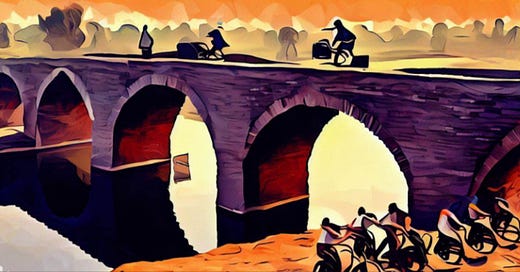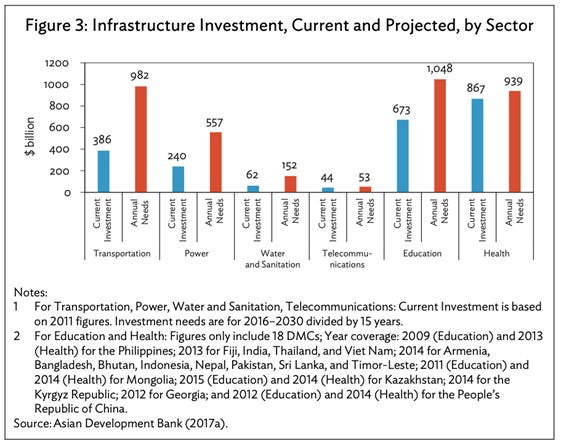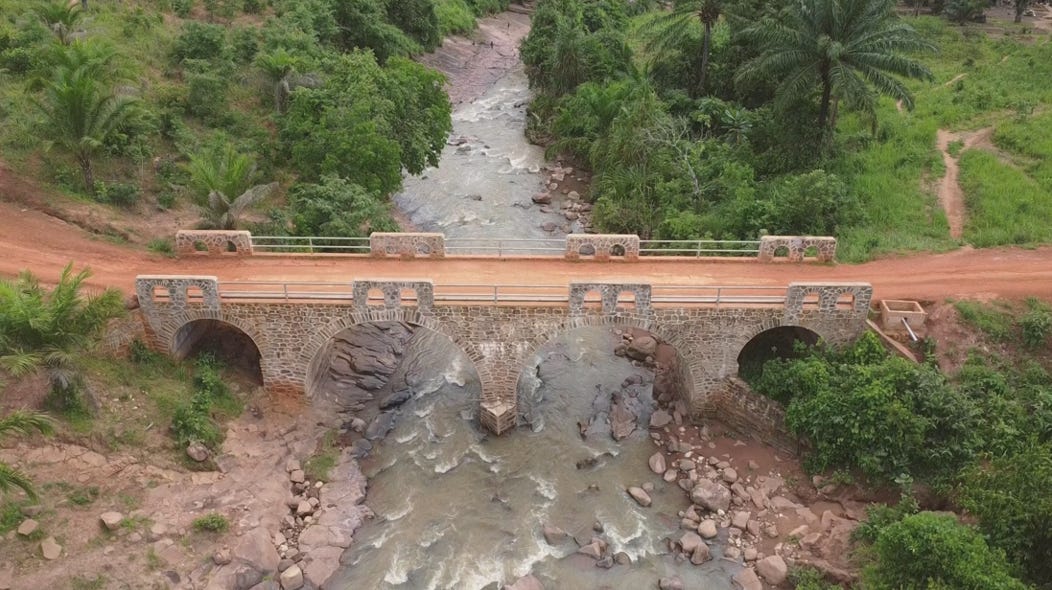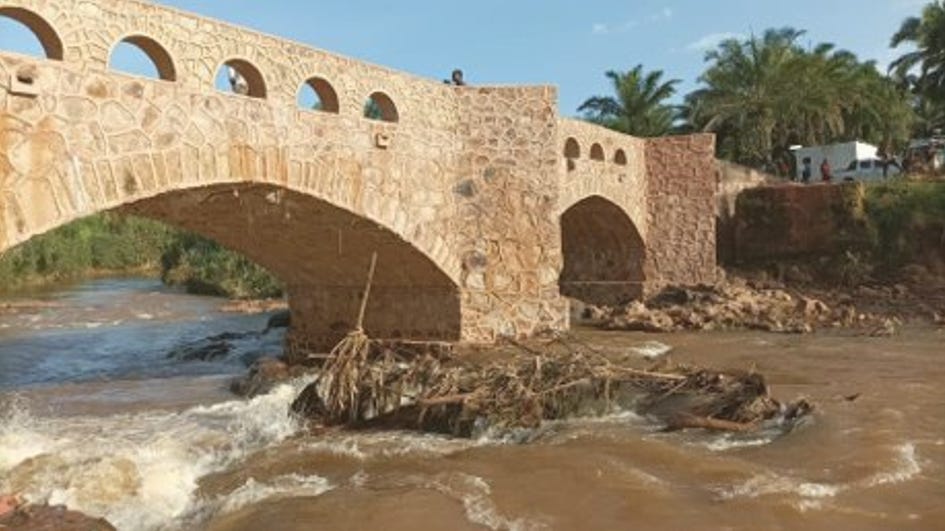
This is a guest post from Willem Van der Voort who is a Civil Engineer and Project Officer for Social Infrastructure at Enabel
Dar es Salaam, morning rush hour. Trucks, cars, motorcycles all clamber for advantage on the overcrowded Nyerere Road; one of the main arteries heading into the city. Traffic is at a crawl. At each major intersection an overworked traffic police officer attempts to control to flow through the noise and the smog and the dust. That is until they hit the part of Nyerere road where the city’s flyovers have already been completed. Here the jams dissolve and the flyovers prove their value. Suddenly the exploding traffic density in the booming commercial capital of Tanzania seems manageable.
Large transport infrastructure projects like the upgrading of Nyerere road, which included the aforementioned flyovers, but also a widening for additional lanes and a dedicated bus lane, show the value of investment in infrastructure to facilitate economic growth. And low-income countries need a lot more of it. If the SDGs are to be achieved, the OECD estimates that the world needs to invest an additional US$645 billion into infrastructure every year until 20301. The Asian Development Bank produced the same data for Asian emerging economies; investment shortfalls across every sector in one of the world’s most dynamic regions.
From this it would appear that the issue is lack of capital moving into infrastructure. Clearly governments in low- and middle-income countries need to be engaging international donors, banks, and private investors to show them the returns to investing in infrastructure. However, both J.P. Morgan, a heavy weight in investment banking, and IEA, the International Energy Agency, argue that the challenge is not necessarily on the supply side, but rather on the demand side. People are ready to invest, but the projects struggle to get out of the starting gates. Large infrastructure projects, even private ones, require substantial procedures for planning permissions, procurement, etc. This delays start dates, slows construction, and uses up a large portion of both the state’s and the construction sector’s capacity. From that perspective, the project pipeline, getting projects off the drawing board, into construction, and completed, is the issue.
Streamlining policy and increasing state capacity to allow more projects to be prepared and assessed simultaneously is not achieved overnight. However, there is another way to increase the number of shovel ready projects that can absorb those stranded investment dollars. The infrastructure gap is not limited to large scale projects, like the Nyerere road upgrades, adding a runway to the international airport, or building a railway across the country. Small infrastructure – think of a bridge across a rural stream, municipal drainage systems, or a pedestrian walkway – has an important impact on economic development as well2. When implemented in large numbers, these small projects can also attract the interest of donors looking for cost effective infrastructure programs with a big impact.
Scale is rarely referenced when differentiating between infrastructure projects. The OECD, for instance, only differentiates on sector in its infrastructure investment gap estimation. As mentioned, administrative processes are frequently the bottleneck on the demand side. The level of complexity in these processes is most often determined by the project’s budget. Therefore, small scale infrastructure can be understood as those projects that fall in the lowest bracket, under ~US$100,000, which allows for straightforward administrative processes.
A small infrastructure approach breaks a large investment down into decentralized, bite sized projects, each with a less demanding project pipeline. The workload for the state regulators is spread over many local governments, jobs are created locally for small scale actors, and investments end up in local economies with more local procurement. These decentralized investments build the capacity of the state and the private sector alike as they can engage a large number of small local contractors, rather than a single, often foreign, construction company.
In the Kigoma region of Tanzania, Enabel, the Belgian Development Agency, has invested 1M EUR in the construction of bridges to improve rural access. By choosing a small scale infrastructure approach, Enabel has been able to complete 110 small bridges; helping people in many rural communities reach their place of work, markets, hospitals and schools. The 110 bridges were constructed using the centuries old technology of stone arch bridge construction. These bridges are 80% cheaper than their concrete alternatives and have a carbon footprint of one quarter the size. The construction projects allowed for the replication needed to train craftsmen, engineers and local government on this novel construction method in the region. The success of this program led the national roads agency to adopt the technology and roll it out on a national scale, with 180 bridges planned for FY 23/24. The adoption of this cost-effective technology and small-scale focus is increasing access for more underserved rural and urban communities; all the while putting money into people’s pockets by using local contractors and local materials.
Governments and politicians of all stripes should not be fooled by the allure that photo opportunities of large high-tech infrastructure projects offer. Instead, they should direct donors’ attention to small infrastructure projects where more value for money is often found. This shift will impact lives of people who don’t regularly travel on Nyerere road or live in the big cities. It will speed up capacity building of local governments and the national construction sector, making future larger projects cheaper and quicker to build and it will accelerate the closing of the global infrastructure investment gap. Sometimes, small truly is beautiful.
The Stone Arch Bridge Association is supporting the roads agency in Tanzania to scale up the technology which is ideal for river crossings from 1 to 100m. Have a look on www.stonearchbridges.org for more information.
OECD (2017), Investing in Climate, Investing in Growth, OECD Publishing, Paris, https://doi.org/10.1787/9789264273528-en.
Thomas, E. et al. (2021) ‘Engineering environmental resilience: A matched Cohort Study of the community benefits of Trailbridges in rural Rwanda’, Science of The Total Environment, 771, p. 145275. doi:10.1016/j.scitotenv.2021.145275.








Love it! I'm think of datacenter infrastructure. How do we apply this small infra idea there? Plan to make many small data centers rather than large ones. I wonder if that would work...
Bridges seems like a particularly good use case for small infra... There aren't much scale advantages, they only take up 100m of road so easy to manage and have high value (using a bridge often saves 30mins of taking the long way round)
What other small infra idea would work here?